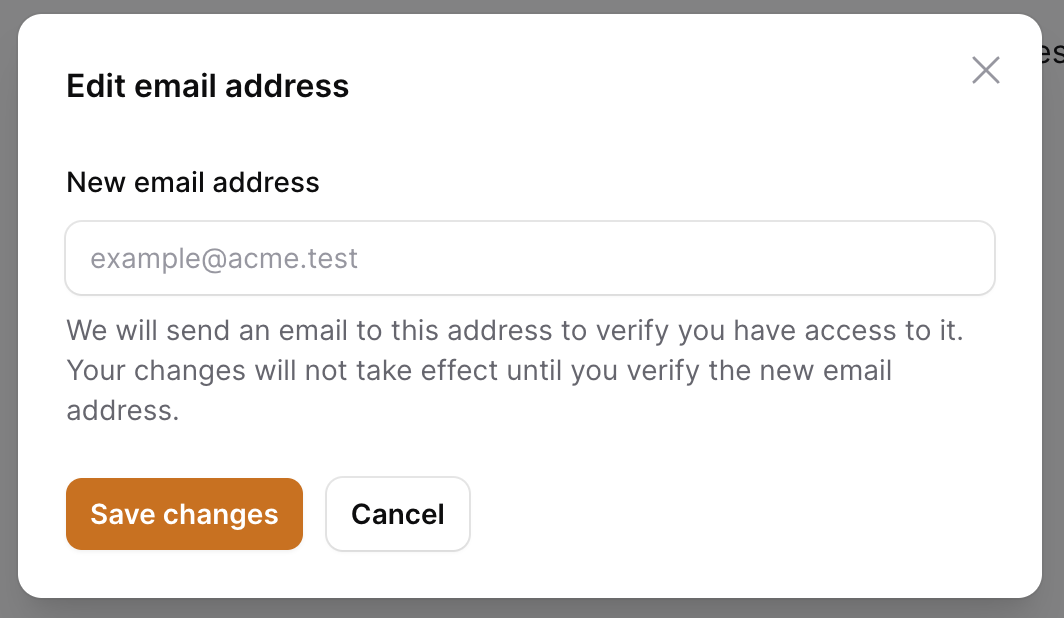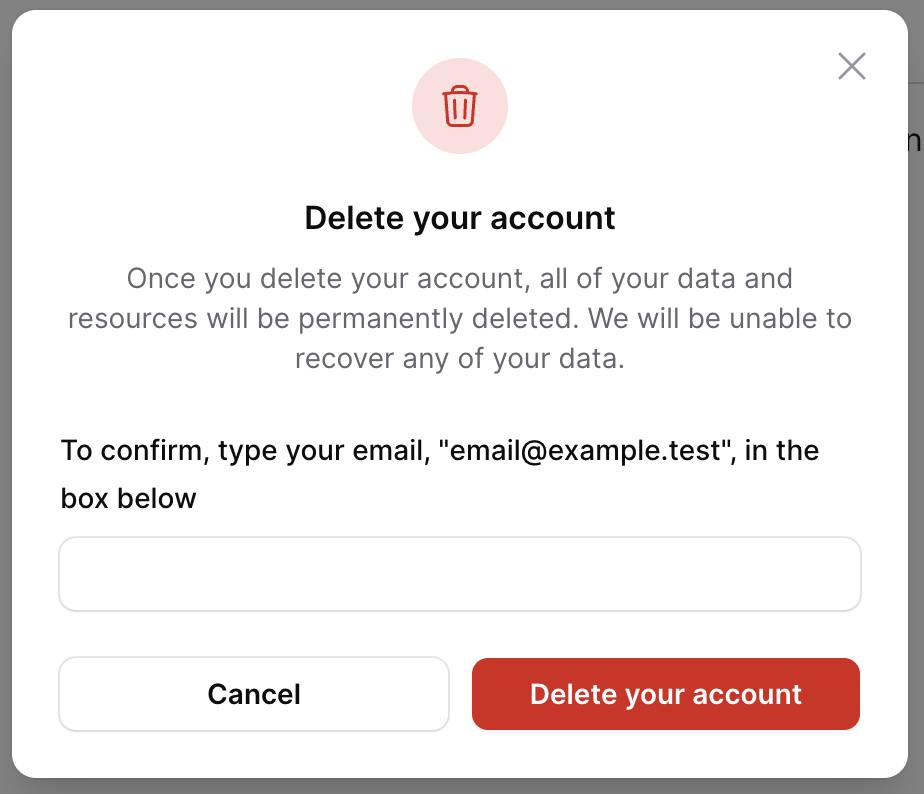profile-filament-plugin
Pages
Settings
On this page
Introduction
The Settings page is meant to act as an account settings page for your users to modify certain account settings that aren't necessarily public. It's also for account admin functions, such as deleting your account.
Each of the components on this page can be customized and swapped out for your own implementations. See Swap Components for more information on how to do that.
Here is what the account settings page will look like by default:

Email address
This component is responsible for displaying the authenticated user's email address, and providing a form to edit it. If you have the MustVerifyNewEmail contract on your user model, this component will also show a pending email change for the authenticated user as well. See the Pending Email Verification installation docs for more information on configuring this.
If you have Sudo Mode enabled, we will require the user to verify their identity before they are allowed to edit their email address.
If you want to completely remove this form from the page, please see Features for more information on how to do that.
Here is what the form looks like if you require users to verify new email addresses:

When a user submits the edit email form, we will send an email to the new email address with a verification link, which will be a temporary signed url. This link is set to expire in 60 minutes of it being sent. The value for this expiration is determined by the auth.verification.expire configuration value. You can modify this in your config/auth.php file.
If you need to customize the email that is sent, you may modify either the language lines that are used (mail.php language file) in the mailable, or modify the mailable itself. Please see the Pending Email Verification docs for more information on customizing this email.
When there is a pending email change for the user, we will show that in the UI, along with actions to either resend the link or cancel the change. Here is a screenshot of what that looks like by default:

{tip} Like the edit email form, the cancel email change action requires sudo mode verification first, if you have sudo mode enabled.
Other situations
If you don't have MustVerifyNewEmail added on your User model, but have Laravel's MustVerifyEmail contract on your user model, we will update the user's email address immediately, but also invalidate their email verification status and send a new email verification notification to the user.
If you don't have either of those contracts on your user model, we will just update the user's email address immediately and do nothing else.
Delete Account
This component is responsible for deleting the authenticated user's account, and then logging them out. We've kept this component very basic by default, but it can easily be customized to meet your application's needs.
If you want to completely remove this form from the page, please see Features for more information on how to do that.
In addition to Sudo Mode, we also require the user to enter their email address in as a confirmation that they are truly sure they want to delete their account. If you've ever deleted a repository on GitHub, this will seem familiar. Here is a screenshot of what this confirmation form will look like:

Customization
Here are some of the ways you can customize the delete account process in your application.
Translations
If you just need to adjust some verbiage, publishing and modifying the language lines are the way to go. Most of the language lines can be found in the pages/settings.php language file.
View
For some changes, overriding our package's view may be a viable solution. Be sure to publish the package views, and then override the livewire/delete-account.blade.php view.
Action
Sometimes, you may just need to override how the user account is deleted. To do this, you just need to override the delete account action class, and then add your custom class to the config file.
namespace App\Actions;
use Illuminate\Contracts\Auth\Authenticatable as User;
use Rawilk\ProfileFilament\Actions\DeleteAccountAction;
class CustomDeleteAccountAction extends DeleteAccountAction
{
public function __invoke(User $user)
{
$user->delete();
// ...
}
}
Now you just need to add your custom action class to the config file:
// config/profile-filament.php
'actions' => [
'delete_account' => \App\Actions\DeleteAccountAction::class,
// ...
],
Swap Component
For the most control and customization, you can implement your own livewire component:
namespace App\Livewire;
use Rawilk\ProfileFilament\Livewire\DeleteAccount as BaseDeleteAccount;
class DeleteAccount extends BaseDeleteAccount
{
// ...
}
use App\Livewire\DeleteAccount;
use Rawilk\ProfileFilament\Filament\Pages\Profile\Settings;
use Rawilk\ProfileFilament\ProfileFilamentPlugin;
use Rawilk\ProfileFilament\Livewire\DeleteAccount as BaseDeleteAccount;
$panel->plugin(
ProfileFilamentPlugin::make()
->swapComponent(
page: Settings::class,
component: BaseDeleteAccount::class,
newComponent: DeleteAccount::class,
)
)